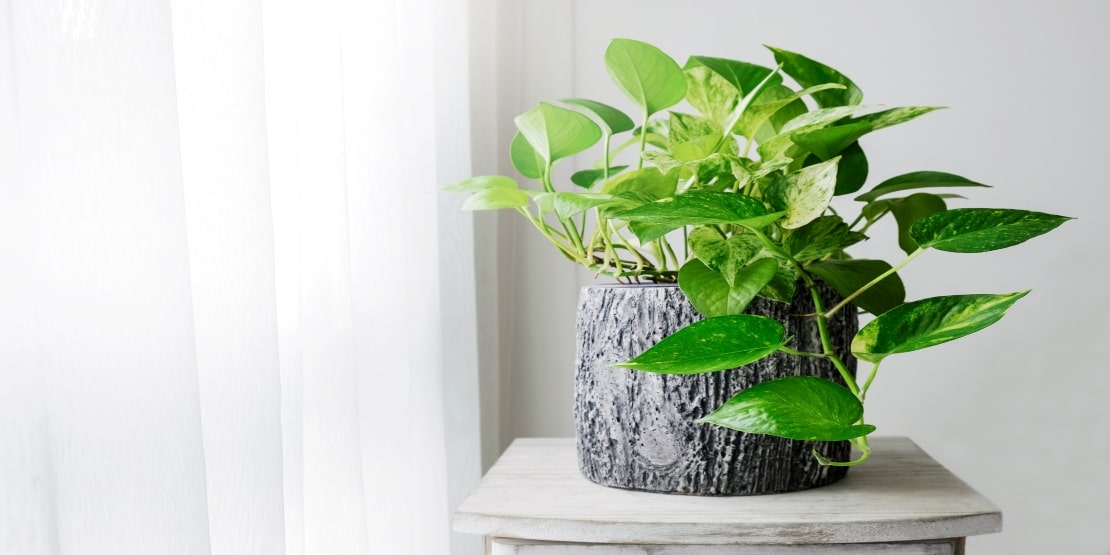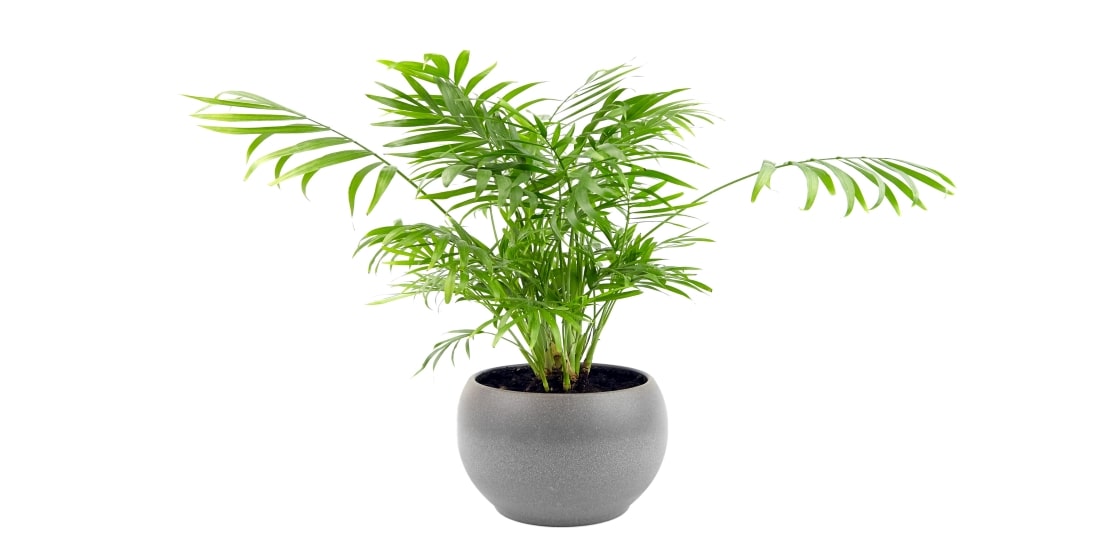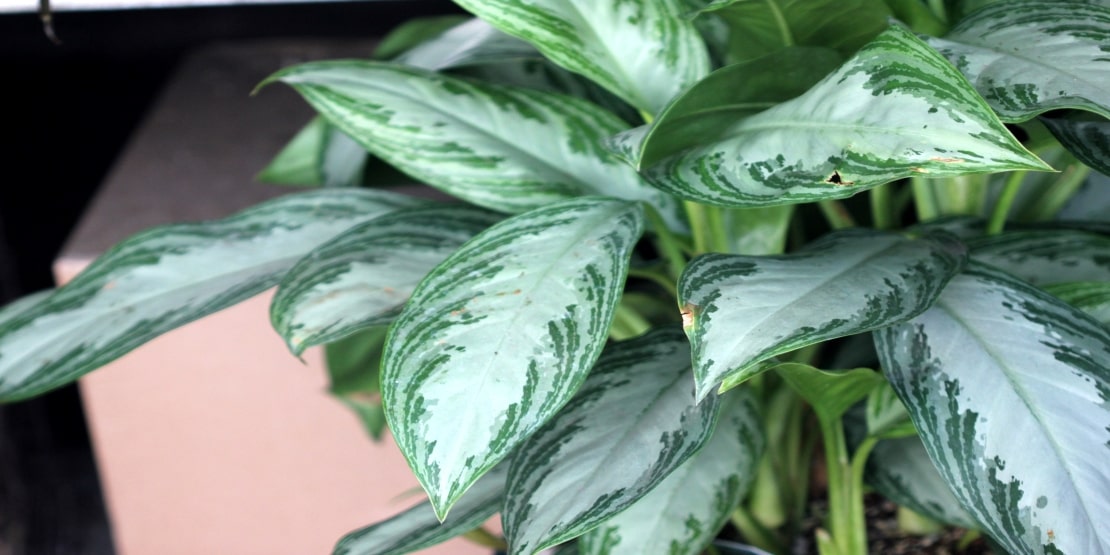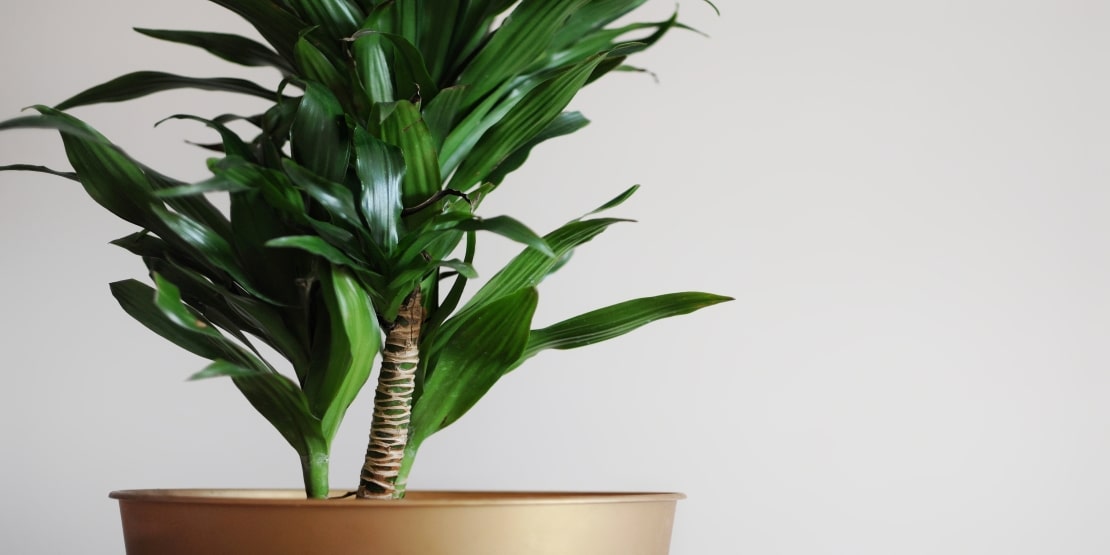In a time when you are exposed to dirt and pollutants, keeping the environment within your house clean is essential. From street traffic, building materials to disinfectants, laundry detergents and cleaning products, everything adulterating the indoor air is toxic for your health. Thus, it is essential to include air purifying plants in your house.
Maintaining indoor house plants is beneficial as they are environment-friendly and cheaper than air purifiers. As per NASA’s Clean Air Study, here are the 10 best indoor plants for cleaning the air that are easy to grow and that work around the clock.
List of Most purifying Plants in House
-
Spider Plant
If you are looking for an indoor house plants that grows fast and purifies the air with low maintenance, the spider plant checks all the boxes. Besides this, it is a non-toxic plant that could be decorated in a child’s room or could be planted in a pet-friendly home.
The plant hardly requires water twice a month and is good for growing with less soil. Also, it always grows baby plant-lets, which increases the supply of air purifying plants that you can decorate your home with or gift to your loved ones.
-
Snake Plant
Sansevieria is the root name of the snake plant, which is native to Africa but can be found on every office table and house window because of its benefits. It is a beginner-friendly indoor plant as it can thrive even with less or no sunlight. Also, they are so forgiving that they will survive in low humidity conditions even if you forget to water them for a few days.
The snake plant is a mental health booster and effective against dust allergens. Moreover, it converts carbon dioxide into oxygen during the night, so it is good to place it in the bedroom as it filters and regulates the healthy airflow.
-
Boston Fern
Boston Fern, a beautiful porch plant, has been popular since the Victorian era. It is best to grow in indirect sunlight as the afternoon sun could burn its fronds. A humid environment is best for Boston Ferns, which is why it is good to keep the soil moist with regular watering.
Aside from enhancing the aesthetics, it is an air-purifying indoor plant that absorbs formaldehyde, which is released by cosmetics, paints, and even smoke. It doesn’t just purify the air but also retains moisture by improving the humidity levels. which helps to sensitize dry skin and sore throat.
-
Peace Lily
Peace Lily or Sapthiphelum is native to Southern Asia and the tropical regions of America. It is amongst the best indoor plants for cleaning the air that thrive in bright indoor indirect sunlight. With big white bracts and glossy dark green leaves, the Peace lily is also a soothing addition to your living area.
It is also an obvious choice for many insomniacs to place it in their bedroom, as it promotes restful sleep by alleviating stress and bringing calmness. It refreshes the vibe of the house by absorbing air pollutants like acetone vapours, benzene, ammonia and xylene. Also, it prevents mildew formation, so it’s good to keep in the bathroom or kitchen.
-
Pothos
A good luck plant, Pothos, is considered one of the best air purifying plants as it removes air pollutants like benzene, xylene, and formaldehyde. It is a fast-growing plant that requires low maintenance. With its stunning range of patterns and leaf colours, it enhances the look of your stairs or balconies.
It purifies the air by eliminating toxins like toluene, benzene, carbon monoxide, and formaldehyde. Also, it improves humidity, which protects you from viruses and influenza. This beneficial plant can thrive without sunlight with just water once a week. However, the leaflets of Pothos contain toxic calcium oxalate crystals, so it’s good to keep it far away from the reach of pets and kids.
-
Parlor Palm
The Parlor Palm, also known as Bella Palm or Chamaedorea Elegans, is native to the rain-forests of Southern Mexico and Guatemala. This excellent air purifier plant is one of the world’s most popular house plants.
It is best to place the Parlor palm around the furniture as it clears out trichloroethylene and benzene that could be off-gassing. The plant is undemanding in terms of water, light, feed, temperature and humidity which makes it a perfect low-maintenance house plant.
-
Chinese Evergreen
Native to tropical regions of Asia, Aglaonema is commonly known as the Chinese Evergreen. It’s an amazing choice for darker homes as its leaf colours range from silvery-green to bright-red, which turns out great on a dark background.
Besides enhancing the ambience, it purifies the air by removing toxins and producing oxygen, which makes it best for bedrooms. It could thrive in indirect light with moist soil; therefore, it does not require regular watering. It is toxic to dogs and cats, so it is best to keep it away from them.
-
English Ivy
English Ivy, an evergreen perennial, is also known as woody wine. It horizontally spreads over the ground and reaches up to 8 inches, which looks great on balconies. It purifies the air, provides anti-inflammatory and antioxidant benefits.
English Ivy also helps with swelling, lung infection, and coughing. It can never get out of your hand with the right care, water, and light. Also, its aggressive growth looks beautiful when hungover baskets.
-
Dracaena
Friendly to dimmer lights, this low-maintenance green is amongst some of the best air-purifying house plants. Dracaena is adaptable to low-light conditions and grows well with moderate watering. This drought-tolerant plant increases humidity, which helps with several respiratory diseases. Also, it cleanses the air by removing harmful toxins and sharpens focus.
With a wide range of foliage features and its daisy-like flowers, Dracaena beautifies the ambience of your room. You can place it anywhere in the filtered indoor light, alongside a sheer curtain ahead of a sunny window.
-
Chrysanthemums
Generally known as mums or chrysanths, chrysanthemums are native to Northeastern Europe and East Asia. This flowering shrub is a powerhouse for air-cleaning qualities as it reduces aerial pollutants like formaldehyde, toluene, ammonia and benzene.
In Southern China, it is popular as a summer tea beverage. Also, it is used in combination with herbs to cure diabetes, chest pain, high blood pressure and influenza. This could be decorated both for outdoor patios and indoor living rooms. And it brightens up your house during winter with its colourful blooms.
In a Nutshell
Indoor plants aren’t just a trend; they enhance the overall ambience of your house. Indoor plants have been shown in studies to reduce stress, boost mood, and increase creativity. Indoor plants are the best roommates, with low maintenance and hidden health benefits. They make us happier and add life to sterile spaces. You can choose some of the best indoor plants for cleaning the air as per your home or health preference.
You May Also Read :
| Tips For Winter Indoor Plants | Winter Indoor Plants |
| Ways To Care kitchen Herb Garden | kitchen Herb Garden |
| Ideas For Modernize House | Modernize House |
| Modern Bungalow House Plans | Bungalow House Plans |
Frequently Asked Question (FAQs)
Chrysanthemums (mums) eliminate common toxins and ammonia to purify the air.
Some indoor plants that generate the most oxygen include the Areca palm plant (it is a great humidifier as it generates the most oxygen as compared to the other indoor plants), Snake Plant, Money plant, Gerbera Daisy and Spider Plant.
Some plants that cleanse the air naturally are Dragon Tree, Peace Lily, Golden Pothos, Spider Plant, Janet Craig and English Ivy.
Although it is tough to state the exact unit, there are at least two plants for every 100 sq ft. A big plant with more leaves purifies the air better.
According to the researchers, the English Ivy can reduce up to 78 percent of airborne pollutants in just 12 hours. Which indoor plant refreshes the air the most?
Which indoor plants generate the most oxygen?
Which plant naturally cleanses the air?
How many indoor plants do I require to purify the air?
Which plant reduces 75 percent of airborne pollutants?





















